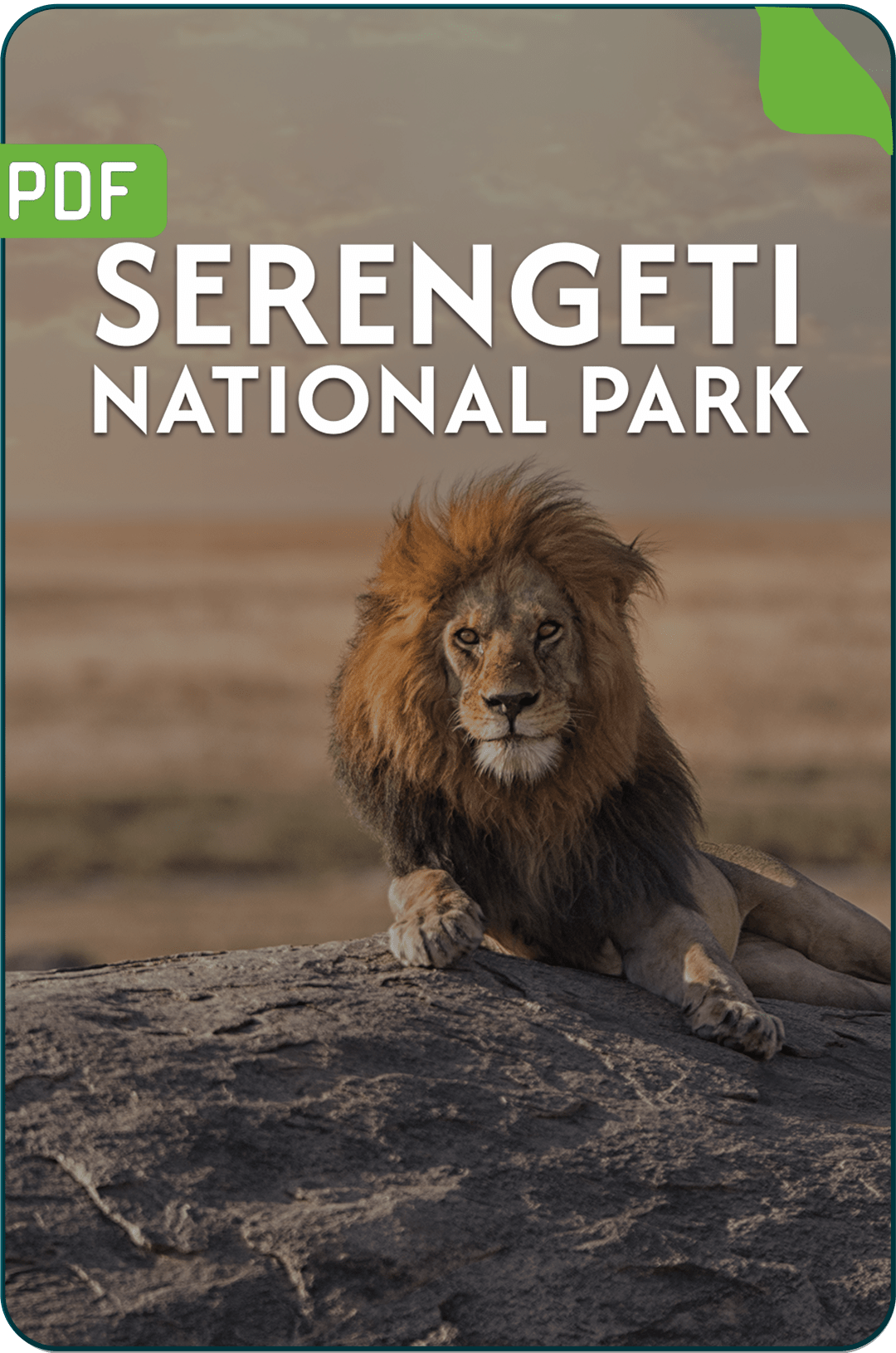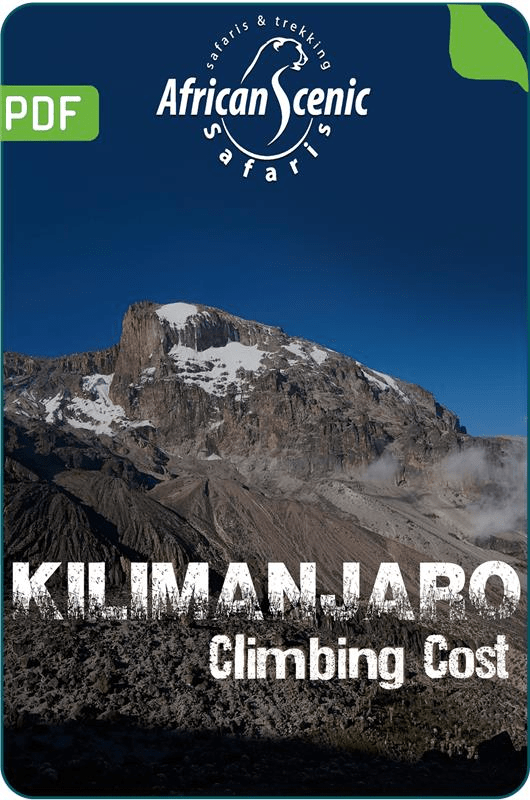Uhuru Peak
Uhuru Peak stands at 5,895 metres above sea level and is the highest free-standing peak in Africa. It’s located on the volcanic cone of Kibo and reaching it is the end goal of every climber. With some of the most incredible sunrises and views, Uhuru encompasses an epic Kilimanjaro Climb.
Here, we analyse every little aspect of Kilimanjaro – including where its name comes from, some fun facts, how you should prepare, an acclimatization profile, and much more. So, explore Kilimanjaro Climbing Packages to reach Uhuru Peak today!
Uhuru – A Name Woven into Tanzania’s Independence
Uhuru is a Swahili word, and the name means freedom in English. It’s a symbol of freedom and self-determination for the people of Tanzania.
In 1961, the late Alexander Nyirenda was tasked to erect the torch named Uhuru and the national flag of Tanzania on top of Mount Kilimanjaro. This was an act of celebrating the independence of the Republic of Tanzania.
Just as the Tanzanian flag was being hoisted at Kilimanjaro’s Uhuru Peak, the Union Jack (which was the flag of Tanzania back then) was being lowered at the national stadium. This symbolized a sign of the things that will eventually change in Tanzania.
Why Is Uhuru Peak So Popular?
Uhuru Peak enjoys immense popularity for several convincing reasons:
- Firstly, it stands as the highest point in Africa, drawing adventurers and mountaineers eager to conquer this remarkable summit.
- Secondly, the allure of Kilimanjaro's unique ecosystem, encompassing diverse climates and stunning landscapes, captivates nature enthusiasts from around the globe.
- Moreover, the sense of achievement and personal fulfilment derived from reaching Uhuru Peak serves as a powerful motivation for many.
Together, these factors contribute to the enduring popularity of Kilimanjaro Uhuru Peak as a must-visit destination.
Fun Facts About Uhuru Peak
To maximize your Kilimanjaro Climb, here are some facts about its summit – Uhuru Peak:
- Uhuru Peak is the highest point on the African continent.
- It is estimated that over 50,000 people attempt to climb Uhuru Peak every year.
- Uhuru Peak is one of the Seven Summits, which is a mountaineering challenge to climb the highest peaks on each continent.
- The trek to Uhuru Peak Tanzania takes climbers through five different ecological zones: Cultivation Zone, Forest Zone, Heather-Moorland Zone, Alpine Desert Zone and Arctic Summit.
- The first recorded ascent of Uhuru Peak was by Hans Meyer and Ludwig Purtscheller in 1889.
- The summit of Uhuru Peak is covered with snow and glaciers, although they are receding due to climate change.
- The Kilimanjaro Uhuru Peak Temperaturecan range from -7°C to -20°C, making it important to pack warm clothing.
- Due to the high altitude, climbers may experience altitude sickness and need to acclimatize before attempting the final ascent.
- The record time to climb from the base of Kilimanjaro to Uhuru Peak is just under 6 hours, set by Karl Egloff in 2014.
Kilimanjaro Climbing Routes To Uhuru Peak
There are seven Kilimanjaro Climbing Routes that lead to Uhuru Peak. Each of them has its benefits and drawbacks, such as success rate, acclimatization profile, cost, scenic variety, etc. Below are all of these Kilimanjaro Routes, their description, and the number of days they take to get to the summit.
| NAME OF THE ROUTE |
DESCRIPTION |
NO. OF DAYS IT TAKES TO REACH UHURU PEAK |
| Lemosho Route |
One of the most scenic out of all the Kilimanjaro Routes. |
7-8 Days |
| Machame Route |
The most popular among the routes. |
6-7 Days |
| Marangu Route |
The only route that offers accommodation in huts. |
5-6 Days |
| Rongai Route |
The only Kilimanjaro Route that approaches Uhuru Peak from the Kenyan Plains (North). |
6-7 Days |
| Northern Circuit Route |
The only route that circuits through 360 degrees on the mountain. |
9-10 Days |
| Shira Route |
This route has the highest starting elevation. |
7-8 Days |
| Umbwe Route |
The steepest and hardest Kilimanjaro Route (only recommended for well-experienced climbers). |
5-6 Days |
Preparing For The Hike To Uhuru
Climbing to Uhuru Peak is a physically and mentally demanding challenge. Before embarking on the trek, it is essential to prepare your body by doing cardio and strength training exercises regularly. It is also important to acclimatize to the high altitude by spending time at higher elevations before the climb.
The following are some tips that will help you while preparing to climb Kilimanjaro’s Uhuru Peak:
- Packing sensibly is the key. You also need to take into consideration the fluctuating temperature of Kilimanjaro. Warm layered clothing items, comfortable sleeping bags, and snow boots should not be forgotten.
- Work on your fitness levels and build up your endurance before beginning your ascent of Uhuru Peak.
- Pick a Kilimanjaro Climbing Route that has a duration of at least 8 days. This way you can have the best chances of success plus a great acclimatization profile.
The Beauty Of Uhuru Peak
The trek to Uhuru Peak offers some of the most breathtaking views of the African continent. As you ascend, you will pass through diverse landscapes, including lush rainforests, alpine meadows, and rocky lunar-like landscapes.
Once you reach the summit, you’ll be rewarded with splendid views of the snow-capped peaks, miles of natural beauty coming from every direction, and the sunlight peeking through the clouds. This is a great opportunity for you to:
- See the surroundings from a different perspective
- Experience the beauty of nature in a truly unique way
- And, find an inner strength you didn’t know you had after accomplishing a major feat.
All of our Kilimanjaro Climbing Packages are designed to bring climbers to Uhuru Peak just as the sun rises beyond the horizon. The Uhuru Peak View from here is often overwhelming, with more than a few of our past guests describing being moved to the verge of tears by the experience.
The Geology Of Uhuru Peak
Uhuru Peak, the highest point on Mount Kilimanjaro, holds a fascinating geological history. Its formation can be traced back to volcanic activity millions of years ago.
- The peak is composed of several layers of volcanic rock, including basalt, trachyte, and phonolite.
- These rocks were formed through successive eruptions, creating a diverse range of colours and textures.
The presence of ancient glaciers has also shaped the landscape, leaving behind glacial valleys. Exploring Uhuru Peak offers a unique opportunity to witness the geological wonders that have shaped this iconic summit.
Climb Kilimanjaro With Us
Get ready for a mountain adventure with real advice, smiling guides, and simple help that actually works. We’re with you from start to summit.
The Uhuru Peak Signpost
The Uhuru Peak Sign is a famous landmark located at the summit of Mount Kilimanjaro. The signpost marks the highest point on the mountain and is a popular spot for climbers to take photos and celebrate their achievements.
The wooden signpost on the peak reads:
- Congratulations!
- You are Now at Uhuru Peak, Tanzania, 5895 M. AMSL
- Africa’s Highest Point
- World’s Highest Free-Standing Mountain
- One of World’s Largest Volcanoes
- Welcome
Climbing to the summit is a challenging but rewarding experience, and many consider reaching the Uhuru Peak signpost to be a highlight of their climb.
Avoiding Crowds At Uhuru Peak
Uhuru Peak can get crowded, especially during peak season. To avoid the crowds, consider climbing during the off-season or choose an alternative route to the summit.
Breathing Easy: Altitude Tips for the Final Ascent
Altitude sickness, also known as acute mountain sickness (AMS), is a common condition that can occur when climbing to high altitudes such as Kilimanjaro's Uhuru Peak.
It's caused by the reduced availability of oxygen at higher altitudes and can manifest as a range of symptoms, including headache, nausea, fatigue, and dizziness. Here are some ways to cope with altitude sickness when climbing Uhuru Peak Mount Kilimanjaro:
Acclimatization: When climbing Kilimanjaro, it's essential to take your time and climb slowly to allow your body to acclimatize naturally.
Hydration: Staying hydrated is essential when climbing to high altitudes. Drinking plenty of water helps to counteract the effects of Kilimanjaro Altitude Sickness and reduce its symptoms.
Oxygen: If you experience severe symptoms of altitude sickness, your guide may provide you with oxygen. Breathing oxygen can help to reduce the symptoms of altitude sickness and help you feel better.
When Is The Best Time To Climb To Uhuru Peak?
The Best Time to Climb Uhuru Peak is during the dry season, which runs from June to October. The weather during this time is relatively stable, with clear skies and low precipitation.
However, this is also the peak season, and the trails can get crowded. The off-season, which runs from April to May, can offer lower crowds, but the weather is less predictable.
Reaching The Pinnacle Of Kilimanjaro!
In summation, reaching Africa's highest point offers breathtaking views of the snow-capped Uhuru Peak against a backdrop of stunning beauty. It's a remarkable achievement that only a select few can claim, providing an undeniable source of triumph.
Our Kilimanjaro Climbing Packages at African Scenic Safaris include various Kilimanjaro Climbing Routes that are guaranteed to get you to Kilimanjaro’s Uhuru Peak. So, there’s no time like the present! Contact one of our climbing experts and see the majesty of Kilimanjaro for yourself.
Interested in Climb to the top of Africa? Our Kilimanjaro Climbing Packages are here to guide you all the way to Uhuru Peak. Start your climbing today and make that summit dream come true!
Explore Kilimanjaro Travel Guide
Find essential topics below to help you plan, prepare, and enjoy your Kilimanjaro travel experience fully.
Frequently Asked Questions
Uhuru Peak is the highest point on Mount Kilimanjaro, the highest mountain in Africa. It stands at an elevation of 5,895 meters (19,341 feet) above sea level and is located on the Kibo crater rim.
Climbing to Uhuru Peak usually takes several days, depending on the route and your physical condition. There are several routes to choose from, including the Marangu, Machame, Lemosho, and Rongai routes. Each Kilimanjaro Climbing Route has its unique challenges and rewards.
Climbing Kilimanjaro Uhuru Peak can be physically demanding, and climbers should be in good physical shape and undergo a period of acclimatization to minimize the risk of altitude sickness. However, climbers with good fitness levels and proper preparation can successfully reach the summit.
Climbers should have proper gear and equipment for the Kilimanjaro Climb, including a warm sleeping bag, waterproof clothing, hiking boots, and a backpack. It is also important to bring enough water and snacks to stay hydrated and energized during the climb.
Yes, it is required to have a guide to Climb Uhuru Peak. The guide will help you navigate the mountain, ensure your safety, and provide support and advice during the climb.
The best time to climb Uhuru Peak is during the dry season, which is from June to October and from December to February. During these months, the weather is usually clear and dry, making it easier to climb and providing excellent views.
Uhuru Peak Height is 5,895 metres (19,340 feet) high.
The Uhuru Peak Temperature ranges from -7°C to -29°C (19°F to -20°F).
The sign on Uhuru Peak reads "Congratulations! You are now at Uhuru Peak, Tanzania - 5,895m. AMSL. Africa’s Highest Point, World’s Highest Free-Standing Mountain, One of World’s Largest Volcanoes, Welcome.
Around 5-9 days is the average duration of reaching the summit of Mount Kilimanjaro.
The Machame, Marangu, Rongai, and the Northern Circuit are some popular route choices for reaching Uhuru Peak.
Prior climbing experience is not required to climb Uhuru Peak, but physical fitness and acclimatization are essential.
Uhuru Peak holds great significance as the highest point in Africa and symbolizes freedom and independence.
Yes, a permit is required to climb Uhuru Peak, which can be obtained through authorized trekking agencies.
The main challenges of climbing Uhuru Peak include altitude sickness, steep terrain, unpredictable weather, and physical exertion.
Simbo Natai, founder of African Scenic Safaris, crafts sustainable, meaningful Tanzanian journeys rooted in his deep local knowledge and passion.
Director
























 African Scenic Safaris #1 on TripAdvisor
African Scenic Safaris #1 on TripAdvisor 




